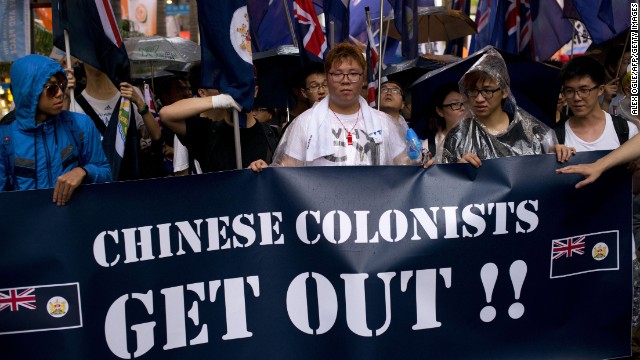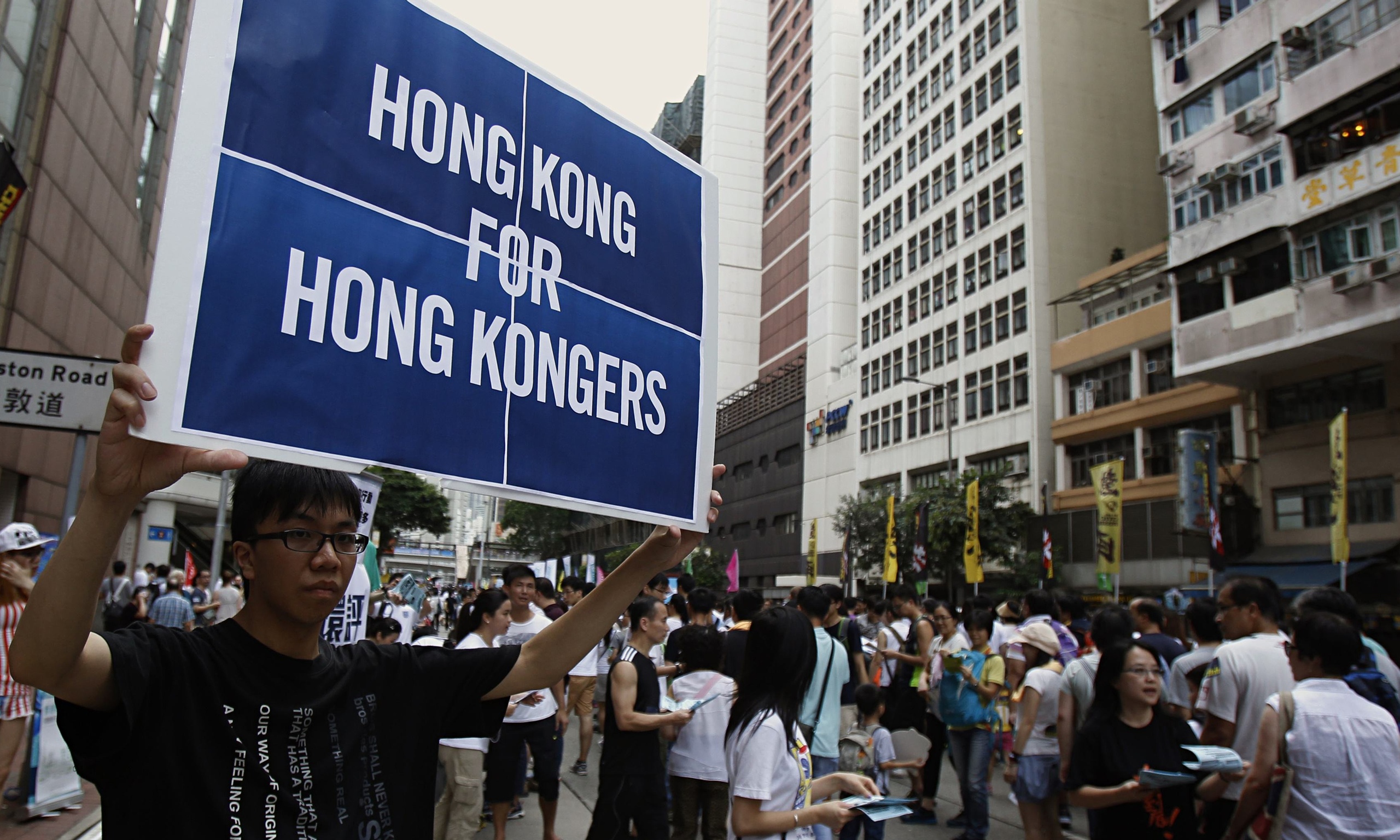In Hong Kong, it’s a yellow umbrella.
In Taiwan, the similarly bright sunflower.
In South Korea, it is more subtle – small, yellow ribbons and flags.
Together, these symbols of different yet connected movements have turned 2014 into a banner year for protests in many rapidly growing and changing countries in East and Southeast Asia, and may foreshadow coming change in the region.
At a glance, Occupy Central in Hong Kong or the hunger strikes by families connected with the Sewol ferry disaster in South Korea may seem focused on specific concerns, relevant only to the people in that society.
However, take a step back and the movements are, surprisingly, quite similar.
Occupy’s focus is on Hong Kong gaining its long-promised democracy, but it is fueled by living costs, limited infrastructure, and rising inequality – the same challenges facing Indonesia and Thailand.
In Seoul, initially it seems that protestors in the city center want justice for the hundreds of victims of Sewol.
But what they are calling for – an investigation into what they see as deeply ingrained corruption and collusion connecting the ferry company, the police, politicians, and perhaps even the president – has implications that go far beyond a simple criminal case.
Thailand also saw similar slogans about corruption at both red-shirt and yellow-shirt rallies.
“In [Thailand and Hong Kong] protesters are calling for accountability and greater transparency in the political and economic realms,” said Matteo Fumagalli, head of the Department of International Relations at Central European University.
The most dramatic protests took place this March in Taiwan, where youth stormed past police barricades and occupied the Taiwanese Parliament, in opposition to a trade deal with China that they believed with erode the island-state’s independent political identity.
Individually they are examples of social unrest, but collectively, do these movements herald something greater?
Are they an Asian version of 2011, when protests in Tunisia spread into neighboring Egypt, Libya, and then throughout the entire Arab region.
At the time it was seen as a sign that the Arab world’s citizens were tired of the same-old dictators and wanted dramatic societal change.
Asia, too, faces a similar “Democracy Gap.”
“In some countries in the region the growth of democracy has not kept pace with economic development. It seems clear that economic progress alone does not necessarily lead to democratic gains,” said Peter Manikas, director of Asia programs for the New Democratic Institute in Washington D.C.
It is not only political institutions that have lagged.
Corruption remains high, and media freedom has actually regressed, as Reporters without Borders, a France-based NGO, noted in its 2013 and 2014 World Press Freedom Indexes.
This year, only Taiwan was ranked as having a “satisfactory” media environment; while countries like Japan, Thailand, Hong Kong, and South Korea have seen their rankings drop, some dramatically.
So why now?
Several factors are present.
Economic growth in several countries has not been evenly distributed – the GINI coefficient, which roughly measures inequality, has risen substantially in the past decade in Hong Kong, Indonesia, China, and Thailand.
A higher coefficient means greater inequality, and according to a report released by the OECD, if Asia was taken as a whole, its GINI coefficient would have risen from .39 to .46 from 2001, a stark contrast to the dips seen over the same period in numerous South American and African countries at similar development levels.
A number above .4 is the level used by analysts to gauge the potential for social unrest – the very unrest we are now seeing in the region.
It should come as no surprise that Hong Kong, one of the world’s richest economies per capita, has a GINI coefficient above .53, making it one of the 15 most unequal societies in the world.
The cost of living is also rising, and there is a greater awareness of the negative role of corruption in society – an issue regularly cited as one of the top concerns of citizens all across the region.
Younger generations are especially effected, as they find that the social services and safety nets available to their parents may no longer exist when they are ready to use them.
China is the other elephant in the room.
Twenty-five years after students protestors at Tiananmen Square were driven out by military force, the country remains authoritarian, and thus far there is no major or nationwide protest movement taking place within its borders.
But it is China’s growing influence that is a focal point for protests in Taiwan and, more recently, in Hong Kong, where 16 years of reunification has yet to forge the common identity that Beijing had sought.
Even in South Korea, protestors have cited the recently announced free trade deal with China as an example of President Park Geun-hye’s incessant and questionable collusion with business, and her disregard for the interests of regular Koreans.In fact, in two of the countries where protests have played out this year, we can see clearly two directions that this “Asian Spring” could take.
In Thailand, the stand-off between yellow-shirt protestors, who wanted an overthrow of Prime Minister Yingluck Shinawatra’s administration for corruption, and more populist, pro-Thaksin (the former prime minister deposed in 2006) red-shirts, led to a military coup this May.
The military-led, constitution-less government has subsequently taken steps to curb public debate, media freedom, and citizen power.
This is contrasted with what happened in Indonesia (a fellow ASEAN member-state), where a bill in August to remove direct elections for regional positions – a blatant attempt to entrench political power – passed by the outgoing parliament that was governed by a coalition of parties dominated by the old guard, was followed by a massive public backlash that led outgoing President Susilo Bambang Yudhoyono to issue a law annulling the bill.
In one country populism and civic engagement won.
In another the old-guard maintained and even strengthened their grip on society.
It is the same battle being fought right now in Hong Kong and South Korea, and it is bubbling beneath the surface in China and Japan.
Albert Goldson, an Asia analyst with Indo-Brazilian Associates, a New York City global advisory firm and think tank, cautions against comparing what’s happening in Asia too closely with what happened in the Arab world three years ago.
The vast geographic, cultural, and economic differences between OECD members South Korea and Japan, Hong Kong’s hybrid status, and still developing Indonesia and Thailand make comparisons challenging; and despite the common issues, there has been little linkage or communication between the youth leaders in each country.
The analogy is overly simplistic – these are two vastly different parts of the world.
Victor Louzon, a Fox Fellow and expert in East Asian history at Yale University, agrees; believing that for Hong Kong, this battle will not be won in the short-term.
“Future political evolutions will depend on [Hong Kong’s] capacity and will to mobilize every time Beijing encroaches on political freedom, and to mobilize periodically in favor of genuine elections, because that would raise the political cost for the Chinese government.”Perhaps that is a good thing.
In the Arab world today, the euphoria of 2011 has been transmogrified into a horrific civil war in Syria, military rule in Egypt, and continued fragility in Libya.
Only Tunisia – that initial spark – seems to have emerged as a democracy, and many observers are unsure if even that will remain in the years to come.
Whatever happens, the impact will be felt around the world.



No comments:
Post a Comment